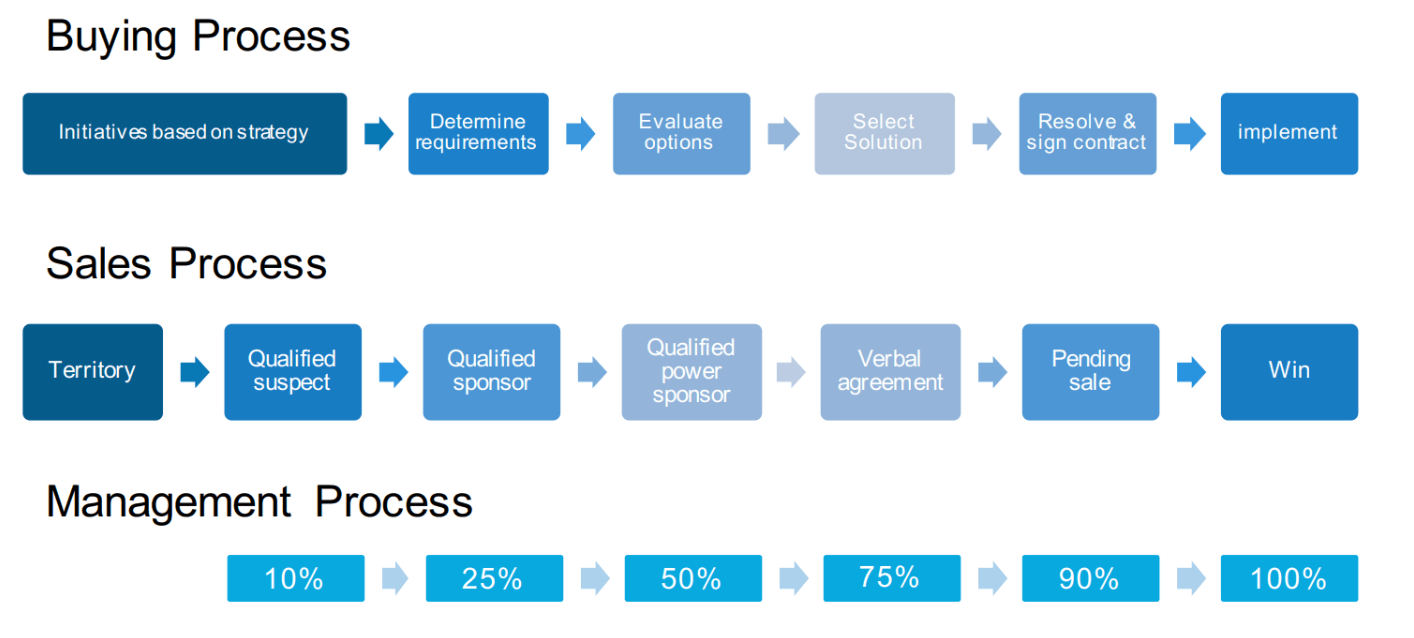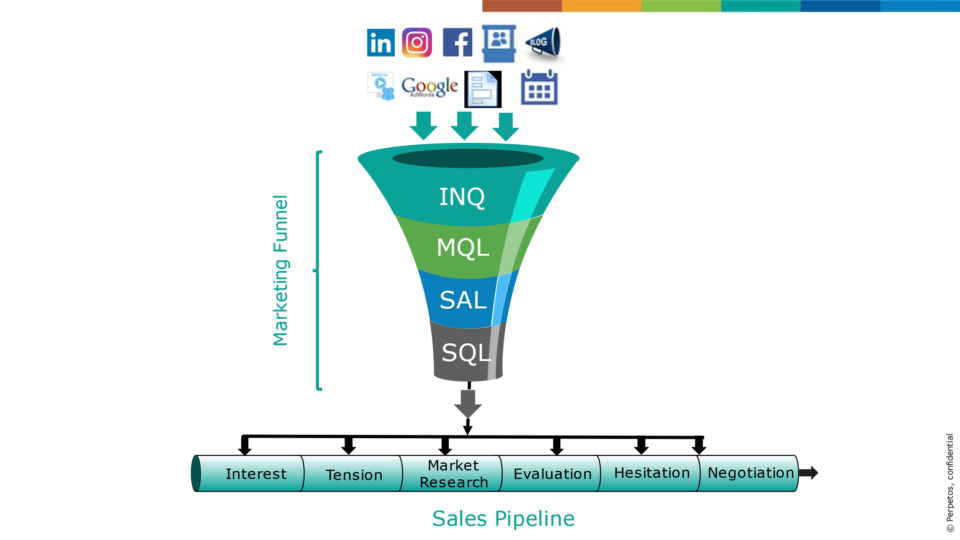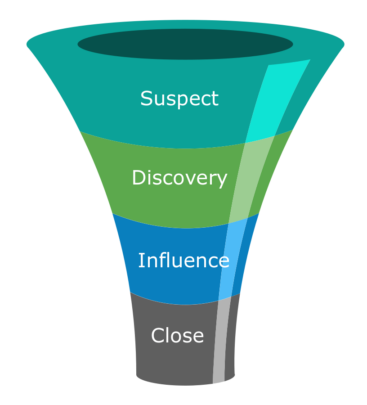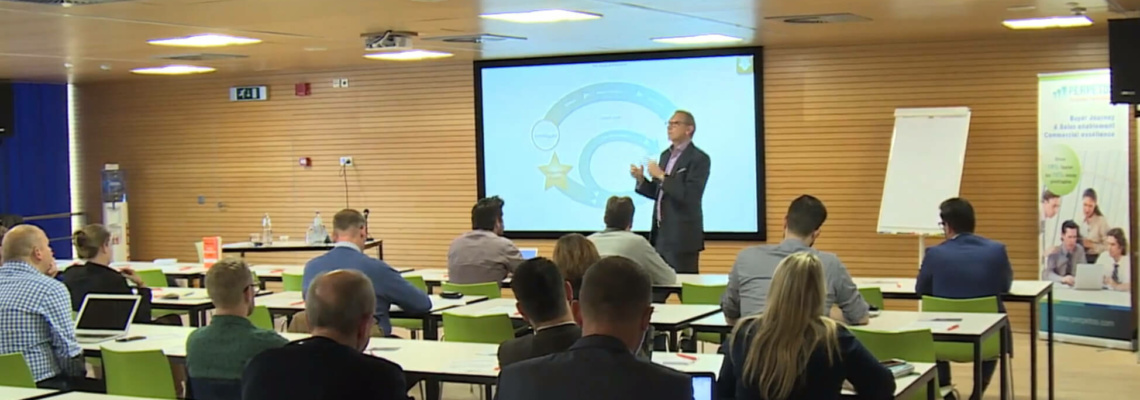Does it still make sense to present the sales process as a linear multi-step progression? And if not, how can we organize sales to handle today’s complex reality?
During the industrial revolution in the 19th century, industrialists tried to streamline and standardise factory production into linear processes as much as possible – thinking that this would help them to manage their activities, predict the outcome of each step in the production process, and so ensure a consistent level of quality.
We still view the sales process today largely in the same linear way as the industrialists did back in the 19th century. We get a sales lead in, qualify it, have a discovery meeting, exert our influence in the offer phase, and do whatever it takes to close the deal.
We often assess our salespeople’s productivity according to this linear logic: we count the number of appointments, offers and conversion rate for these offers, and then we try to optimize this process as much as possible. The leading salesperson in the organization is usually the benchmark in this assessment, with the lesser gods needing to mould themselves into their image.
Increasing complexity
Organizing sales according to this linear representation works to a certain extent – the complexity of the sales process can be manageable if you share exactly the same sales dynamic in all deals, and only have to deal with one type of stakeholder, with a similar order size each time…
But the reality is completely different and much more complex for most salespeople:
- Most salespeople are responsible for different products and serve different vertical markets
- The number of stakeholders who make or influence decisions is growing all the time. The most recent research speaks of 5 to 20 stakeholders, depending on the size and complexity of activities
- The various decision-makers and influencers are rarely or never all in the same mental phase in the buying journey. Some of them will not yet see the benefits of your product, while others might have been wanting it for a long time already. Each stakeholder will have travelled part of the buying journey from the perspective of their own responsibilities, and considered the impact of your product on their department
This alone can result in overwhelming complexity already, which makes it difficult for individual salespeople to handle. Every element in this complicated matrix of products, industries, stakeholders and buying phases demands a different sales conversation. Also bear in mind that each salesperson is working on multiple deals at the same time.
Linear internal processes
The linear approach is unfortunately still the most common, and it’s often cemented in rigid processes and CRM systems. It’s a recipe for failure. A typical example is a salesperson having a conversation with a prospect who knows exactly what they want but does not have the authority to make a decision. A CRM often cannot handle this complexity.
The classic picture of suspect – prospect – discovery – solution – object handling – closing has often been updated and aligned with a typical buying process for complex sales, but even here, salespeople are often forced into a linear framework of ‘required steps to follow’.

The typical marketing approach, where prospects go through a funnel from awareness to decision, may be useful for content marketing and digital customer journeys, but it is too simplistic to represent the complexity of the actual buying journey, and certainly not suitable for tracing buying readiness. Is someone who downloads your eBook interested in buying your product? Maybe. But just as often they do this out of personal interest.
Adapting to the unique buying journey
It’s clear that every buying journey is unique, and classic sales models cannot adequately capture this reality. Every decision-maker has taken their own path, and it’s difficult for a linear process to provide an answer to that. As a salesperson, you are constantly entering into the customer’s buying journey at different moments. Forcing an internal, linear process on the customer’s mental process is therefore useless.

Take the example of a couple entering an electronics store to look for a new TV. The tech geek in the couple will likely be quickly convinced about the latest features on the new 8K HD device. The more price-conscious half of the couple may wonder whether a new purchase is even necessary. As a salesperson, you need to adapt to each buyer’s mental phase. You probably won’t be able to bluff the price-conscious half of the couple with features (decision). Nor will you have to point out to the tech geek the necessity for a new TV (awareness).
What salespeople need today, to be able to handle complexity, is an adaptive model that allows them to be agile and adapt to every situation. The salesperson’s main task is therefore to detect the customer’s mental state and buying readiness. If they can do this, it’s important that they respond to that mental state by doing the right thing at the right time. Developing sales people is one of the main responsibilities for sales leaders. Making sure sales people can report on the real situations in every deal in a very pragmatic but structured way is needed to enable steering and coaching. A classic multi-step process greatly restricts this and makes business reviews too time consuming, with a lot of irrelevant storytelling, and without the expected outcome.
The current market complexity requires a new, non-linear approach, which will require a whole new mindset in many companies. But once the switch is made, the results can soon follow. An adaptive sales approach that takes into account each stakeholder’s individual buying readiness is the way forward to reduce the cost of sales and increase conversion rates.
To find out how to go about it, get in touch.



 Pascal Persyn
Pascal Persyn


